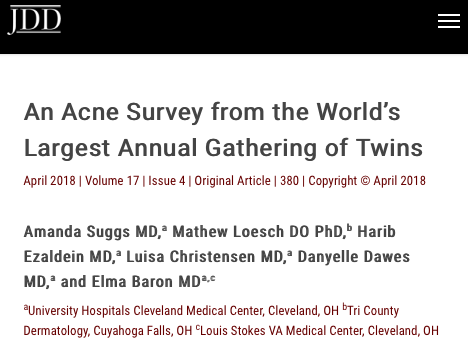
NEW YORK (Sept. 9, 2019) – The Journal of Drugs in Dermatology (JDD) presented dermatologist Andrew F. Alexis, MD, MPH, with the Innovations in Skin of Color Dermatology Award at Skin of Color Update, formerly Skin of Color Seminar Series, held September 7 and 8 in New York. The award recognizes individuals who have fostered innovation and improvement in dermatology through increased emphasis on skin of color education and research. If you missed the event, you can purchase lectures on-demand here.
“Andrew F. Alexis, MD, MPH is committed and passionate — not only about being the best dermatologist he can be – but also about bringing skin of color education to dermatology,” said Shelley Tanner, CEO and president of SanovaWorks, which produces the JDD and Skin of Color Update. “Through his efforts, the changing landscape of patients can now thrive through treatment and management plans that address their specific needs.”
“Dr. Alexis is the top innovator in the dermatologic and cosmetic treatment of patients with skin of color,” said dermatologist Eliot F. Battle, MD, co-chair of Skin of Color Update along with Dr. Alexis. “His decades of pioneering research in dermatology have led to the development of new procedures and products that address a wide range of dermatologic conditions. He compassionately treats his patients, shares his expertise by presenting throughout the world and gives back through mentoring the next generation of dermatologists and researchers. I am honored to serve alongside this distinguished innovator.”
Dr. Alexis is chair of the department of dermatology and director of the Skin of Color Center at Mount Sinai St. Luke’s and Mount Sinai West, New York. As such, he is actively involved in advancing patient care, research and education pertaining to dermatologic disorders that are prevalent in ethnic skin. He is also professor of dermatology at the Icahn School of Medicine at Mount Sinai.
Dr. Alexis received his medical degree from Columbia University College of Physicians & Surgeons and his Master of Public Health at Columbia University’s Mailman School of Public Health. He completed his dermatology residency at Weill Cornell Medical Center, followed by a fellowship in dermatopharmacology at New York University School of Medicine.
Dr. Alexis has published more than 70 articles in peer-reviewed journals and has co-edited two text books on dermatology for skin of color as well as authored 10 book chapters. He is a past president of the New York Dermatological Society and is currently chair of the Scientific Committee of the Skin of Color Society.
The recipient of the Innovations in Skin of Color Dermatology Award, given by the Journal of Drugs in Dermatology, is nominated and chosen through the recommendation of a panel of senior national thought-leaders in dermatology, a committee of dermatology practitioners and several industry leaders.
The Journal of Drugs in Dermatology (JDD), a full-color, peer-reviewed publication indexed with MEDLINE®/PubMed®, was founded by dermatologist Perry Robins, MD. Now in its 18th year, it offers one of the fastest routes to disseminate dermatologic information, and is considered the fastest growing publication in dermatology, presenting original articles, award-winning case reports and timely features pertaining to new methods, techniques and drug therapy that provide readers with peer-reviewed content of the utmost quality. The JDD is overseen by an International Editorial Board of more than 160 renowned experts and reaches more than 30,000 dermatology healthcare practitioners worldwide.
Skin of Color Update 2020 will be held September 12th – 13th at the Sheraton Times Square.
Media Contact:
Allison Sit
[email protected]
Purchase Skin of Color Update On-Demand:






Recent Comments